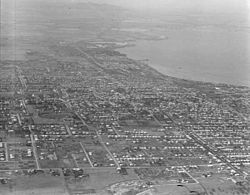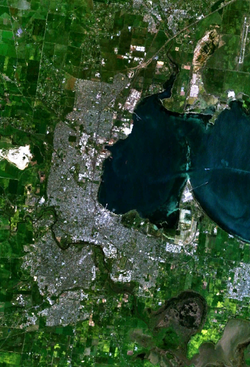| Corio Bay | |
|---|---|
| |
 | |
Location in Victoria | |
 | |
| Location | Port Phillip, Victoria |
| Coordinates | 38°06′26″S144°21′38″E / 38.10722°S 144.36056°E [1] |
| Type | Bay |
| Primary outflows | Port Phillip |
| Frozen | never |
| Settlements | Geelong; Corio |
| Official name | Shoalwater and Corio Bays |
| Designated | 1 March 1996 |
| Reference no. | 792 [2] |
Corio Bay is one of numerous internal bays in the southwest corner of Australia's Port Phillip, and is the bay on which abuts the City of Geelong. The nearby suburb of Corio takes its name from Corio Bay.




